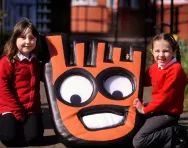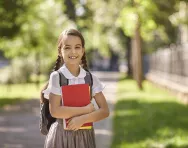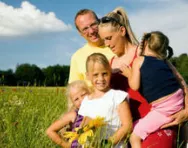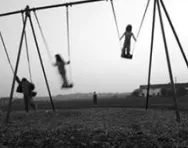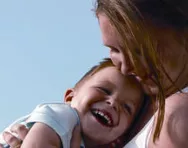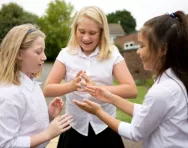Important update from TheSchoolRun
For the past 13 years, TheSchoolRun has been run by a small team of mums working from home, dedicated to providing quality educational resources to primary school parents. Unfortunately, rising supplier costs and falling revenue have made it impossible for us to continue operating, and we’ve had to make the difficult decision to close. The good news: We’ve arranged for another educational provider to take over many of our resources. These will be hosted on a new portal, where the content will be updated and expanded to support your child’s learning.
What this means for subscribers:
- Your subscription is still active, and for now, you can keep using the website as normal — just log in with your usual details to access all our articles and resources*.
- In a few months, all resources will move to the new portal. You’ll continue to have access there until your subscription ends. We’ll send you full details nearer the time.
- As a thank you for your support, we’ll also be sending you 16 primary school eBooks (worth £108.84) to download and keep.
A few changes to be aware of:
- The Learning Journey weekly email has ended, but your child’s plan will still be updated on your dashboard each Monday. Just log in to see the recommended worksheets.
- The 11+ weekly emails have now ended. We sent you all the remaining emails in the series at the end of March — please check your inbox (and spam folder) if you haven’t seen them. You can also follow the full programme here: 11+ Learning Journey.
If you have any questions, please contact us at [email protected]. Thank you for being part of our journey it’s been a privilege to support your family’s learning.
*If you need to reset your password, it will still work as usual. Please check your spam folder if the reset email doesn’t appear in your inbox.
How to teach children road safety
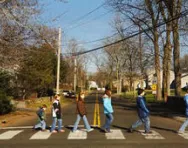
Road safety campaigns have helped reduce child road deaths by 90% since records began in 1979 but six children die and 170 more are seriously injured every month on the UK’s roads and there is a peak in child fatalities and injuries in September and October, the months when kids get used to their new route to school.
Whatever your child's age, road safety is one of the most important lessons they'll learn.
Road safety for pre-schoolers: hand holding
First and foremost for pre-schoolers is an understanding of the vital importance of always holding a grown-up’s hand.
Reinforce this message by making ‘hand in hands’. Together draw round your hands on card and cut them out. Put your child’s ‘hand’ on top of yours and attach them at the top with a split pin. You could decorate them with felt-tipped pens to look like two styles of gloves. Organise other members of the family, including grandparents, to make ‘hands in hands’ with your child, too.
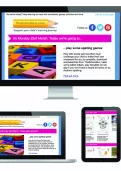
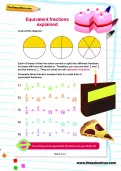
Boost Your Child's Learning Today!
- Start your child on a tailored learning programme
- Get weekly English & maths resources sent direct to your inbox
- Keep your child's learning on track
The Green Cross Code
With young children, focus on the core steps:
- Find a safe place to cross
- Stop at the kerb
- Look right
- Look left
- Look right again
- If the road is clear, cross – don’t run!
- Keep looking and listening for traffic as you cross.
Road safety for primary-schoolers: The Stop! strategy
A third of all children hurt crossing the road said they didn’t stop before stepping off the kerb, and as many said they didn’t look. Children love ‘teaching’ teddies and dolls, so get them to do so. Lay a skipping rope on the floor as the ‘kerb’, and quickly transform a doll or teddy into a string puppet by tying a piece of string to each arm and tying the other end to a small ruler. Just listen to your child instructing their ‘puppet’ to ‘stop at the kerb’, which will drum the message in for them.
Sing about safety
A simple but effective way to get children to take ownership of safety messages is to encourage them to make up their own songs – just a repeated refrain and a nursery rhyme tune will do. Try ‘Hold my hand’ to the tune of ‘Twinkle, twinkle little star’ – repetitive, but it works!
DriveSafe & StaySafe run an annual competition for children to write the rap lyrics and/or music to a catchy song to promote road safety; the songs feature road safety characters called The Conies to help kids learn to use the roads safely.
Road safety digital games
Brake, the road safety charity, has produced two free interactive resources to help children to think about how our streets can be made safer by buckling up and concentrating on the road.
Virtual Road World is an app for kids aged 6-8 and challenges children to complete a series of quests by moving through a city, crossing roads and collecting bonus stars if they select the safest route.
Brake also offers lots of free resources to help teachers and parents teach kids about road safety.
The THINK! child road safety campaign features more than 50 free resources for parents, teachers and schools.
The future of road safety: augmented reality
Augmented Reality (AR) road safety teaching resources and research for schools will bring the green cross code into the 21st century from September 2019. Road Safety GB have used Department for Transport funding to develop a world-first safety app, Arility, that allows pupils to run through road safety scenarios in lessons, helping them to improve their road safety knowledge and skills. Arility will test children on a range of common safety scenarios like how to use a pedestrian crossing, how to retrieve a ball from the road and how to cross the road with a bike.
